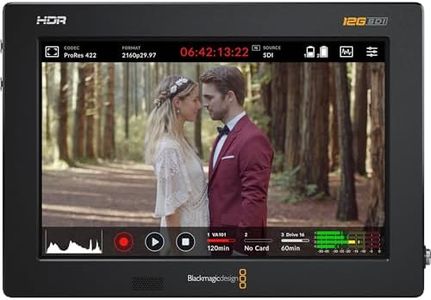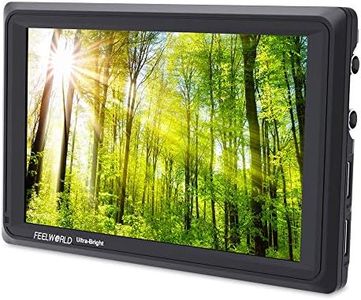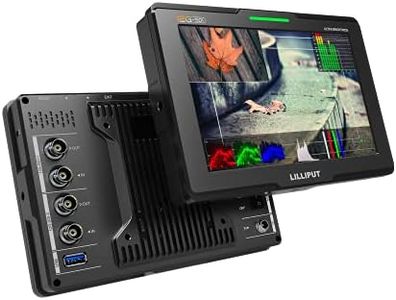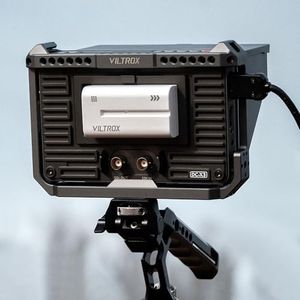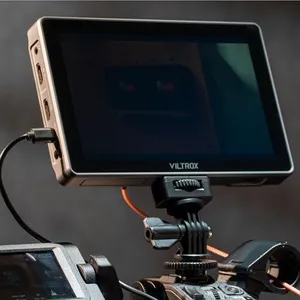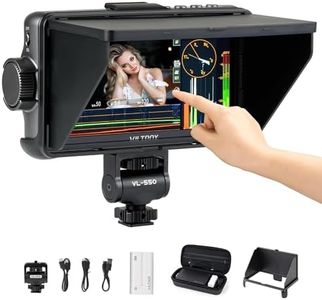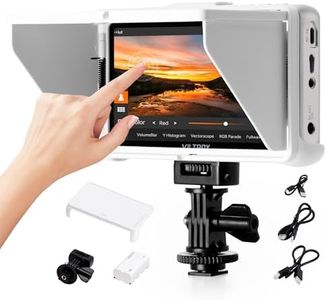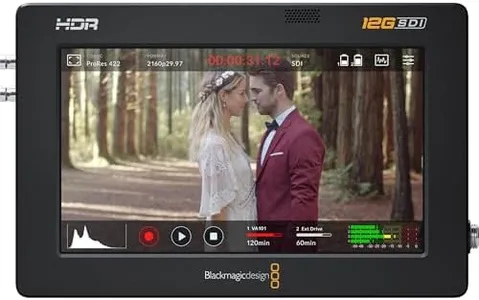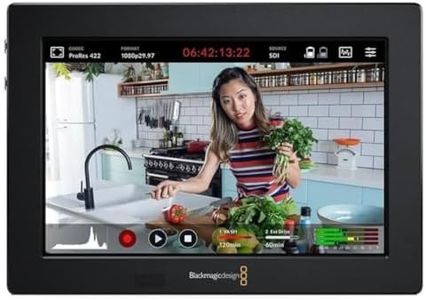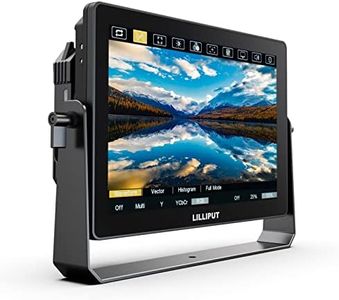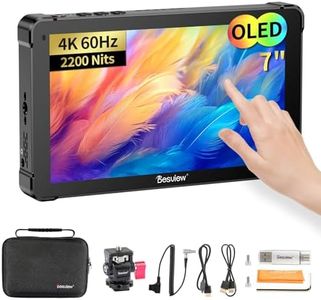10 Best Dslr Field Monitor 2025 in the United States
Our technology thoroughly searches through the online shopping world, reviewing hundreds of sites. We then process and analyze this information, updating in real-time to bring you the latest top-rated products. This way, you always get the best and most current options available.

Our Top Picks
Winner
SmallHD Cine 5 Camera Monitor with 5-Inch 1920 x 1080 Touchscreen Display, 3G-SDI/HDMI, Bright 2000nits Daylight Viewable LCD Panel, for Video Production
Most important from
7 reviews
The SmallHD Cine 5 Touchscreen On-Camera Monitor is a solid choice for professionals needing a reliable field monitor. Its 5-inch screen boasts an impressive brightness of 2000 nits, ensuring visibility even in bright sunlight, which is a significant advantage when working outdoors. With a 1080p resolution and 10-bit color processing, it delivers excellent picture quality and color accuracy, making it suitable for critical viewing in high-end productions.
One of the standout features is the joystick control, which allows for easy navigation of the monitor’s settings, even with gloves on. This is particularly helpful for First Assistant Camera (AC) operators and camera operators who need to make adjustments quickly in varying conditions. The Cine 5 also supports optional camera control for RED DSMC2 and RCP2 cameras, turning the monitor into a central control hub. This functionality can be incredibly beneficial on set, allowing users to manage various camera functions directly from the monitor, although it requires additional software and cables.
Yet, it’s worth noting some drawbacks. The optional camera-control functionality means extra costs and gear, which can be a downside for budget-conscious filmmakers. Additionally, while the monitor is lightweight at 14.7 ounces, its compact design may not provide the same immersive viewing experience as larger monitors. In terms of build quality, the Cine 5 is durable enough for field use, but portability could be compromised by its additional accessories. The SmallHD Cine 5 is a powerful tool for camera operators and DPs looking for a high-quality monitor, but users should consider the total investment required to access its full capabilities.
Most important from
7 reviews
Blackmagic Design Video Assist 7" 12G-SDI/HDMI HDR Recording Monitor (HYPERD/AVIDA12/7HDR)
Most important from
99 reviews
The Blackmagic Design Video Assist 7" 12G-SDI/HDMI HDR Recording Monitor offers a 7-inch display, which is a good size for field work as it provides ample screen real estate for monitoring and reviewing footage. The resolution of 1920 x 1080 pixels ensures clear and sharp images, which is crucial for detailed work. The product is portable, weighing just 0.423 ounces, making it easy to carry around on shoots. However, the package weight is noted as 1.42 kg, which may include additional accessories or packaging materials, so it's worth checking what's included in the box.
With both HDMI and 12G-SDI connectivity, it offers versatile input/output options suitable for various camera setups. Battery life is mentioned as battery-powered, but the exact duration isn't specified, so users might want to carry extra batteries for longer shoots. Build quality appears robust, with the product being manufactured in the United States. It's also noted that no assembly is required, which adds to the convenience.
The monitor is compatible with multiple operating systems including Linux, Windows XP, and Windows 7, ensuring flexibility in post-production workflows.
Most important from
99 reviews
FEELWORLD FW279S 7 Inch Ultra Bright 2200nit DSLR Camera Field Monitor Daylight Viewable High Brightness Full HD 1920x1200 3G SDI 4K HDMI Input Output
Most important from
63 reviews
The FEELWORLD FW279S is a 7-inch field monitor designed to be bright and clear even under strong daylight, thanks to its very high brightness level of 2200 cd/m². This makes it easier to see your shots outdoors without needing bulky sun hoods. Its resolution of 1920x1200 (Full HD) offers a sharp and detailed image, with a wide 160-degree viewing angle so the picture stays accurate from different positions. The monitor supports professional color standards (Rec.709), which is important if you want to ensure your footage looks accurate right on set.
It connects easily to most DSLR and professional cameras via 4K HDMI and 3G-SDI inputs, and offers audio monitoring options with a headphone jack and built-in speaker. Portability is a big plus here—the monitor is lightweight at just 365 grams and has multiple mounting options, making it simple to add to your camera rig or stabilizer. Customizable shortcuts and features like focus assist and false color help improve your filming experience. The power adapter is sold separately, so you'll need to factor that in for continuous use. Also, the glossy screen might cause some reflections in very bright settings despite the high brightness.
Battery life depends on the F970 battery you choose, but the included battery plate makes powering the monitor on the go convenient. Build quality is solid enough for field use but the monitor is lightweight rather than rugged. This monitor is well suited for filmmakers and photographers who need a bright, sharp, and versatile display for outdoor shooting and focus pulling, especially when working with 4K-capable cameras.
Most important from
63 reviews
Buying Guide for the Best Dslr Field Monitor
Choosing the right DSLR field monitor can significantly enhance your photography and videography experience. A field monitor allows you to see a larger, clearer image of what your camera is capturing, making it easier to frame shots, focus accurately, and review footage on the go. When selecting a field monitor, it's important to consider several key specifications to ensure it meets your needs and enhances your workflow.FAQ
Most Popular Categories Right Now

